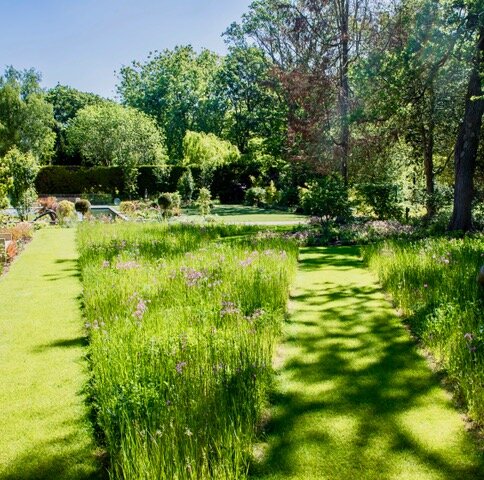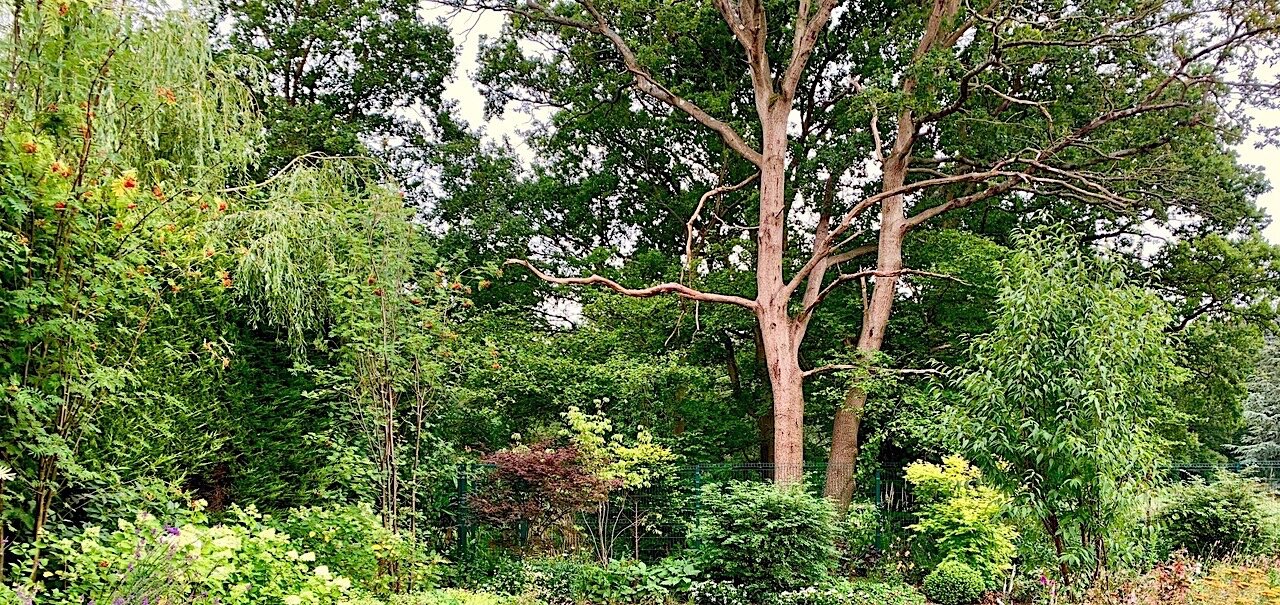Our gardens are an essential part of our ecosystem
Gardens are an extension of our living space, anchor a building with its landscape and can add up to 20% to the value of a home.
There are over 15 million private gardens in the UK occupying over a million acres of land. More than 85% of us live in towns and cities and gardens occupying about 25% of urban space.
The design decisions we take can be beneficial for our environment rather than cause harm.
Our gardens are rich in biodiversity, help water conservation, provide urban cooling and insulation and connect us with the world we share.
The importance of green space to our mental and physical wellbeing is well documented. Whether we garden, relax, play, entertain or just look out of our back windows on a rainy day, our gardens ease our stress, improve our wellbeing, evoke memories, encourage exercise and remind us daily that we are part of something bigger.
Whatever style of garden we choose, we can all contribute our environment and have resilient and sustainable gardens. The design and selection of materials and plants for each project can be undertaken with attention to conservation, biodiversity, water conservation and sustainability to create spaces that integrate the needs of people with nature.
Here are some things to consider when you are planning a new garden or updating an old one.
Lawns
The damage artificial lawns are causing the environment is becoming increasingly apparent. They endanger the climate, wildlife insects and oceans.
Artificial lawns
are a no- go zone for all wildlife & pollinators.
kill living soil, which has taken thousands of years to be created, which is excavated for installation.
leave a massive carbon footprint in production and transport across the oceans
are so hot in the summer that they generate urban heat islands, which contribute to global warming.
have to be cooled by hosing to walk or sit on.
impede water penetrating the ground creating run off to the drains
need power tools to scrub animal faeces and plant detritus
loose polymer fibres into the water system
are largely not recyclable so end up in landfill where they continue to pollute the water systemare endangering the climate, wildlife, insects and oceans
When we are all being careful with plastics– why would we cover our gardens with it?
Growing lawns capture Carbon Dioxide and release Oxygen for us to breath. Most are a monoculture and an increasing number of ecological options are becoming available, which are low maintenance and need less water and food.
They include:
mixed species ‘eco’ lawns
dreamy wildflower lawns
evocative chamomile
magical clover lawns
Or just have planting and permeable pathways
Pollinators & Planting
Planting can provide a rich source of nectar for crucial pollinators such as butterflies, bees, moths and hoverflies.
41% of global insect species have declined over the past decade.
This will lead to a collapse of nature’s ecosystems and is due to intensive agriculture and the heavy uses of pesticides. This threatens food production and the future of mankind. At the current rate of decline insects will be extinct in 100 years.
Habitats for endangered species
Gardens provide a rich and varied source of food and shelter for our endangered population of frogs, newts, bats, hedgehogs, indigenous and visiting birds.
Wildlife habitats have been depleted as wildflower meadows have been cleared, marshes and ponds drained, hedgerows dug up and woodlands destroyed to make way for fertilised farmland, conifer covered moorlands, roads and buildings.
Include:
diverse planting scheme with trees
water – if not a pond, just a bird bath
native species in the planting scheme
a green roof on a shed or extension
green walls – hedges, climbing plants or mixed species systems.
Water
Water belongs in the water table, not down the drain. Consider including permeable or semi-permeable hard surfaces such as self- binding gravels, bound or crushed aggregates and including planting pockets in terraces.
Planting increasingly needs to be drought tolerant. Drip irrigation on a timer is an efficient use of water as it comes on at night so reducing evaporations – however, it is best use to establish plants and then they should take care of themselves.
Rainwater/grey water harvesting and recycling systems are an excellent way of avoiding waste and should be an essential part of a renovation where basements are constructed to capture water pumped from the walls for use in the garden.
Decking & wooden structures
New, hard wood is unsustainable as it endangers tropical and temperate forests. These are the lungs of the planet and home to millions of life forms, some of our most iconic and loved animals as well as indigenous people.
Reclaimed hard wood gives new life to lost trees.
Composite decking binds recycled wood with plastic – so is not biodegradable and plastic particles enter the water system. It gets extremely hot in the sun, so is uncomfortable to walk on and creates urban heat islands, contributing to global warming.
Fast growing pine is sustainable and has the added bonus of capturing carbon dioxide from the atmosphere as it grows. Look for wood with bio-solutions that naturally preserve the wood rather than using toxic preservatives.
Children & play
Gardens and play spaces can:
inspire imagination, creativity and adventure
provide opportunities to develop motor skills and special awareness.
encourage co-operation and problem solving rather than just competition.
Offer safe spaces for self-empowerment
be magical and above all connect children with the living world of which they are a part.















































